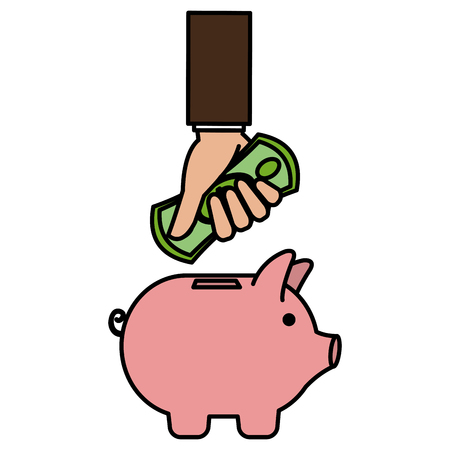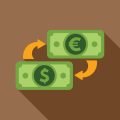1. Understanding High-Yield Savings Accounts
If you’re dreaming of buying your first home, every dollar saved matters. One of the smartest ways to grow your savings is by opening a high-yield savings account (HYSA). But what exactly is a high-yield savings account, and how does it stand out from the traditional options at your local bank?
What Is a High-Yield Savings Account?
A high-yield savings account is a special type of savings account that offers a much higher interest rate compared to regular savings accounts. Most HYSAs are offered by online banks or financial institutions with fewer physical branches, allowing them to pass on the savings to you in the form of better rates.
High-Yield vs. Traditional Savings Accounts
Let’s break down some key differences between these two types of accounts:
| Feature | High-Yield Savings Account | Traditional Savings Account |
|---|---|---|
| Interest Rate (APY) | Typically 4-10x higher than national average | Usually very low (often below 0.5%) |
| Access | Mainly online or mobile banking | Online and branch access |
| Minimum Balance Requirements | Often low or none | Varies; sometimes higher minimums required |
| Fees | Generally low to none | Can include maintenance fees if balance drops below minimum |
| FDIC Insurance | Yes (up to $250,000 per depositor) | Yes (up to $250,000 per depositor) |
Why Are High-Yield Savings Accounts Attractive for Future Homeowners?
Saving for a down payment can take years, so maximizing your returns is essential. HYSAs help your money work harder for you without any added risk—your funds are protected up to $250,000 by the FDIC, just like with any other bank account. With higher interest rates, your nest egg grows faster simply by sitting in the right account, making it easier to reach your homeownership goals sooner.
2. Benefits of Choosing High-Yield Savings for Home Savings
Why Pick a High-Yield Savings Account?
When you’re saving up for your first home, every dollar counts. That’s why more and more future homeowners are turning to high-yield savings accounts (HYSAs). These accounts offer several key advantages that can help you reach your down payment goal faster and with less risk.
Key Advantages of High-Yield Savings Accounts
| Advantage | What It Means for You |
|---|---|
| Higher Interest Rates | Your money earns much more compared to a regular savings account, which means bigger returns as you save for your home. |
| FDIC Insurance | Your deposits are protected by the Federal Deposit Insurance Corporation (up to $250,000 per depositor, per bank), so your savings are safe even if the bank fails. |
| Security & Low Risk | Unlike investing in stocks or mutual funds, HYSAs don’t fluctuate with the market. Your principal stays safe while earning steady interest. |
| No Monthly Fees (at most banks) | You get to keep all the interest you earn without worrying about hidden charges eating into your savings. |
| Easy Access to Funds | You can transfer money easily when it’s time to make your down payment, without long waiting periods or penalties. |
How Higher Interest Rates Help You Save Faster
The biggest draw of a HYSA is its annual percentage yield (APY). While traditional savings accounts at big banks may offer only 0.01% APY, many online high-yield options offer 4% or even more. That means your money grows significantly faster just by sitting in the right account.
Example: Regular vs. High-Yield Savings Over 2 Years*
| Regular Savings Account (0.01% APY) |
High-Yield Savings Account (4.00% APY) |
|
|---|---|---|
| Savings After 2 Years on $10,000 Deposit | $10,002 | $10,816 |
*For illustration; actual rates vary by bank and over time.
Peace of Mind as You Save for Your First Home
Saving for a house can be stressful, but a high-yield savings account lets you focus on your goal without worrying about market drops or losing access to your money. With FDIC insurance backing you up and no unnecessary fees, you can feel confident that your hard-earned savings will be there when you’re ready to buy your first home.

3. How to Compare and Choose the Best Account
Choosing the right high-yield savings account can make a big difference in how quickly you reach your goal of buying your first home. Here’s what you should look for as you compare different options in the U.S.
Key Factors to Consider
Annual Percentage Yield (APY)
The APY tells you how much interest youll earn on your savings each year, including compound interest. Higher APYs mean more money in your pocket, so always check this rate before opening an account.
Fees
Watch out for monthly maintenance fees, withdrawal fees, or other hidden charges that can eat into your savings. Many online banks offer accounts with zero fees—be sure to read the fine print.
Minimum Balance Requirements
Some banks require you to keep a certain amount of money in your account to avoid fees or earn the advertised APY. Make sure the minimum balance fits your budget and saving habits.
Accessibility
You’ll want easy access to your funds if you need them for an emergency or when it’s time to put down that home deposit. Check if the bank offers convenient ATM networks, quick transfers to checking accounts, and good customer service hours.
Digital Banking Features
Modern banking means mobile apps, online statements, automatic transfers, and helpful alerts. If you’re used to managing money from your phone or computer, make sure your new account has solid digital features tailored for American consumers.
Quick Comparison Table
| Factor | What to Look For | Why It Matters |
|---|---|---|
| APY | High, competitive rates (often above 4% as of 2024) | Earns you more interest on your savings over time |
| Fees | No monthly maintenance or withdrawal fees | Keeps more money in your account |
| Minimum Balance | Low or no minimum required | Makes saving flexible for all budgets |
| Accessibility | 24/7 online access, large ATM network, fast transfers | Makes it easy to use your funds when needed |
| Digital Features | User-friendly mobile app, budgeting tools, notifications | Simplifies tracking and growing your savings goal |
Tips for Comparing Accounts Online
- Use bank comparison sites: Websites like NerdWallet, Bankrate, and The Points Guy let you compare top accounts side by side.
- Read real customer reviews: See what other savers say about their experiences—especially about customer service and app functionality.
- Check eligibility requirements: Some banks are only available in certain states or require you to have another product with them.
- Look for sign-up bonuses: Some banks offer cash bonuses for new customers meeting certain deposit requirements.
Selecting the right high-yield savings account is all about matching features with your personal needs as an American consumer saving for a first home. Take a little time to compare options—you’ll thank yourself later!
4. Strategies to Maximize Savings Returns
Automate Your Deposits for Consistent Growth
Setting up automatic transfers from your checking account to your high-yield savings account is one of the easiest ways to grow your savings without thinking about it. Most American banks and credit unions offer this feature, so you can pick a schedule that matches your paydays—weekly, biweekly, or monthly. Automation helps keep your home-buying fund on track and removes the temptation to spend what you meant to save.
How Automation Helps You Save
| Benefit | Description |
|---|---|
| Consistency | You save the same amount regularly, which adds up over time. |
| No Missed Transfers | Your money moves automatically, so you don’t forget or skip months. |
| Less Temptation | Money goes straight to savings before you can spend it. |
Leverage Compound Interest for Bigger Returns
The magic of compound interest means your savings will earn interest not just on your deposits, but also on the interest already earned. High-yield savings accounts in the U.S. typically compound interest daily or monthly, making your money work harder for you over time.
Compound Interest Example (Over 3 Years)
| Year | Balance at Start of Year ($5,000 initial deposit) | Interest Earned (at 4% APY) | Total Balance |
|---|---|---|---|
| 1 | $5,000 | $200 | $5,200 |
| 2 | $5,200 | $208 | $5,408 |
| 3 | $5,408 | $216.32 | $5,624.32 |
This example assumes no additional deposits—if you add more each month, your returns will grow even faster!
Avoid Common Fees That Eat Into Your Savings
Not all high-yield savings accounts are created equal. Some may charge monthly maintenance fees, withdrawal limits fees, or minimum balance fees. Always read the fine print before opening an account. Many online banks in the U.S., like Ally Bank or Marcus by Goldman Sachs, offer fee-free options with competitive rates.
Common Fees to Watch Out For:
- Monthly maintenance fees (look for $0/month options)
- Excess withdrawal fees (federal law allows up to 6 withdrawals per month)
- Minimum balance penalties (choose an account with no minimums if possible)
- Transfer fees between accounts (especially at traditional banks)
Set Realistic Milestones for Your Home-Buying Fund
Saving for a first home in America can feel overwhelming if you look at the total price tag. Breaking it down into smaller goals makes it more manageable and keeps you motivated. Try setting specific milestones—like saving for a 20% down payment or building up an emergency fund alongside your home savings.
Sample Savings Milestones Table:
| Savings Goal | Milestone Amount | Target Date |
|---|---|---|
| Initial Emergency Fund | $2,000 | 3 Months From Now |
| Home Down Payment (20%) | $15,000 (on $75k home) | 18 Months From Now |
| Closing Costs & Moving Expenses | $5,000 | 21 Months From Now |
| Total Home-Buying Fund Goal | $22,000+ | 24 Months From Now |
Treat each milestone as a mini victory—it’ll help you stay focused and celebrate progress along the way!
5. Potential Pitfalls and How to Avoid Them
Understanding Withdrawal Limits
One of the most common mistakes when using a high-yield savings account is overlooking withdrawal limits. In the U.S., federal regulations like Regulation D used to limit certain withdrawals and transfers from savings accounts to six per month, though these rules have been relaxed since 2020. However, many banks still enforce their own limits. Exceeding these can result in fees or even your account being converted to a checking account. Always check your bank’s policy and plan your withdrawals accordingly.
Interest Rate Fluctuations
High-yield savings accounts are known for offering competitive interest rates compared to traditional savings accounts, but these rates can change at any time. Banks adjust APYs (Annual Percentage Yields) based on the Federal Reserve’s decisions and market conditions. Don’t assume your rate will stay the same; monitor your account regularly and be ready to switch if you find a better offer elsewhere.
Example: Interest Rate Changes Over Time
| Bank | APY in January | APY in June |
|---|---|---|
| Bank A | 4.00% | 3.50% |
| Bank B | 3.80% | 4.20% |
This table shows how APYs can fluctuate within just a few months, potentially affecting your returns.
Market Misconceptions
A common misconception is that high-yield savings accounts are similar to investment products like stocks or mutual funds. While these accounts do offer better interest than standard savings, they are not meant for fast growth but for steady, safe accumulation of funds—perfect when saving for a first home down payment. Don’t expect dramatic returns; instead, focus on security and consistency.
Other Common Mistakes and Tips to Avoid Them
| Mistake | How to Avoid It |
|---|---|
| Not checking FDIC insurance status | Verify your bank is FDIC-insured so your money is protected up to $250,000 per depositor. |
| Ignoring minimum balance requirements | Read the fine print—some accounts require you to maintain a certain balance to earn the advertised APY or avoid fees. |
| Overlooking monthly maintenance fees | Select accounts with no monthly fees whenever possible so more of your money goes toward your goal. |
Key Takeaway:
The best way to maximize the benefits of a high-yield savings account while saving for your first home is to stay informed about withdrawal limits, monitor interest rates regularly, and understand what these accounts can—and cannot—do for you in the U.S. banking landscape. This ensures you make smart choices every step of the way.

